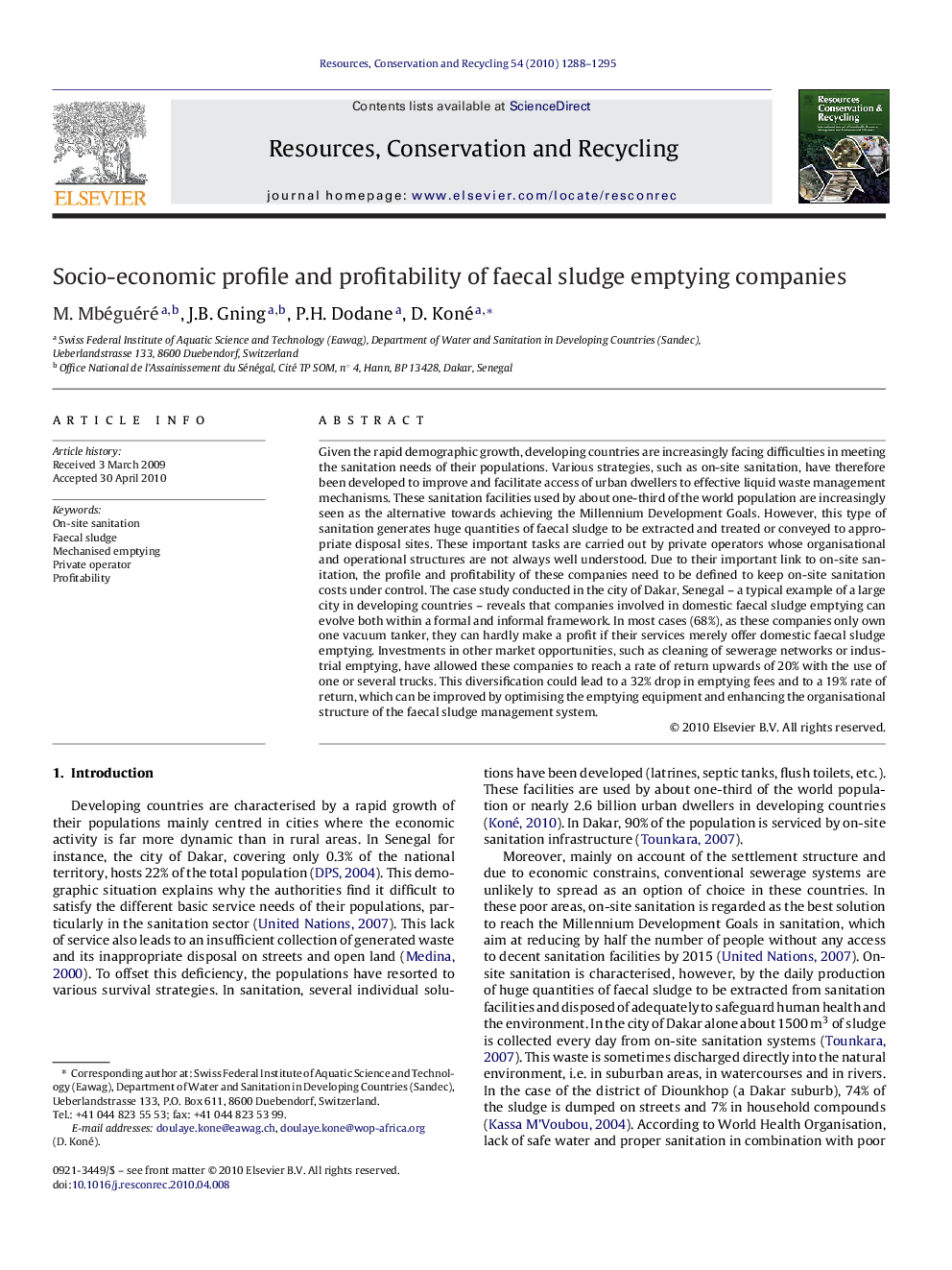| کد مقاله | کد نشریه | سال انتشار | مقاله انگلیسی | نسخه تمام متن |
|---|---|---|---|---|
| 1063816 | 948257 | 2010 | 8 صفحه PDF | دانلود رایگان |

Given the rapid demographic growth, developing countries are increasingly facing difficulties in meeting the sanitation needs of their populations. Various strategies, such as on-site sanitation, have therefore been developed to improve and facilitate access of urban dwellers to effective liquid waste management mechanisms. These sanitation facilities used by about one-third of the world population are increasingly seen as the alternative towards achieving the Millennium Development Goals. However, this type of sanitation generates huge quantities of faecal sludge to be extracted and treated or conveyed to appropriate disposal sites. These important tasks are carried out by private operators whose organisational and operational structures are not always well understood. Due to their important link to on-site sanitation, the profile and profitability of these companies need to be defined to keep on-site sanitation costs under control. The case study conducted in the city of Dakar, Senegal – a typical example of a large city in developing countries – reveals that companies involved in domestic faecal sludge emptying can evolve both within a formal and informal framework. In most cases (68%), as these companies only own one vacuum tanker, they can hardly make a profit if their services merely offer domestic faecal sludge emptying. Investments in other market opportunities, such as cleaning of sewerage networks or industrial emptying, have allowed these companies to reach a rate of return upwards of 20% with the use of one or several trucks. This diversification could lead to a 32% drop in emptying fees and to a 19% rate of return, which can be improved by optimising the emptying equipment and enhancing the organisational structure of the faecal sludge management system.
Journal: Resources, Conservation and Recycling - Volume 54, Issue 12, October 2010, Pages 1288–1295